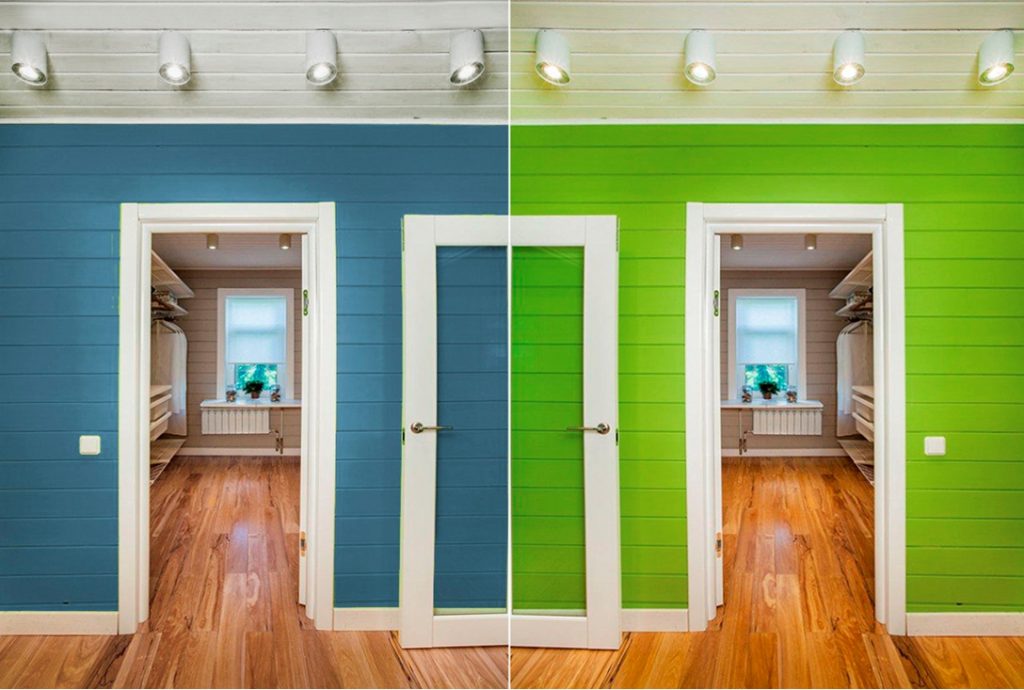Before we talk about the differences between oils and other paints and varnishes (hereinafter – paintwork materials), let’s define – what do they have in common?
Both oils and paints are designed to protect wood from dirt, water, insect damage, elevated temperatures and mechanical damage.
Both oils and coatings are designed to enhance the aesthetic component of wood – either to enhance its natural color and texture, or to visually alter the wood’s appearance.
Both oils and coatings are designed to ultimately extend the life of the wood.
This is probably where we can end with the generalizations.
Let’s start with the comparison.
Aesthetics
Shine and gloss are the main arguments in favor of the use of coatings in wood treatments. None of the oils will give a mirror-like sparkle to the wood surface. However, if you decide to opt for gloss varnish or paint, you should remember – such a surface is slippery, and therefore – traumatic, such a surface is always cold, and therefore – not always pleasant when in contact with exposed areas of the body. Another difference is the “visibility” of the coating. A dense coating will not only feel tactile, it will be visible to the naked eye.

Whereas the same layer of oil will not reveal the visual effect of presence. The textural pattern of the wood as well as the tactile sensation of contact will remain under the oil as natural as it was. Moreover, the oil-treated surface will become velvety. A wax finish is used to give the oil-treated surface more shine. This will not only increase durability, but will also give the wood a quiet, glossy shine.

Mechanics
Of course, the coating of coatings is more durable. The film created by varnishes and paints that protect the wood from the outside is strong and monolithic. But only until the first scratch. Until the first chipping. It’s the impact resistance of paints that makes them vulnerable. Oil works in a completely different way. It penetrates deep into the wood from 2 mm and protects it from the inside. When it dries, linseed oil polymerizes and a breathable film is formed. The surface covered with oil will not crack from mechanical influences, and if you follow the technology of oil application, you will be pleasantly surprised when small scratches will heal by themselves. Damage on the wood treated with the oiled wood will be more visible, the shiny surface will suffer from rubbing and eventually scuffs will become obvious. Whereas oiled wood will retain its original aesthetic appearance for a much longer period of time. A film of oil or wax on the surface of the wood is not as strong at first glance, but it leaves oxygen to the fibers and allows the wood to breathe. (A comparison between patent leather and matte leather shoes would be appropriate here. Having the same natural base, these two types of leather treatment are strikingly different in everyday wear). In addition, the oil included in the oil turpentine will prevent the wood from being affected by fungus and mold, as well as eliminate the appearance of insects.

Ecology
Needless to say about the ecology of paintwork materials. It is surprising to talk about the environmental friendliness of imported oils, which state that the composition contains only 50% of natural ingredients. What is added to the remaining 50%? And on the contrary, it is not superfluous to remind you about eco-friendliness of natural oils for wooden surfaces, where linseed oil is more than 90% of the volume. Linseed oil, which is the basis of such a product, is supplemented with natural turpentine and natural pigments (optional). Safety of the oil is first of all proved by absence of smell. Such a product can be treated wood inside the room without causing discomfort to the inhabitants, not to mention the treatment of external surfaces or non-residential buildings (e.g. – baths). Oil impregnation in combination with natural carnauba wax is recommended for food contact applications. None of the available paints has such recommendations.

Restoration
The durability of coatings is higher than that of oil, as we mentioned above. However, it should be remembered that if the surface treated with the coating is intensely exposed to external factors, it will very soon require repair and restoration. In this case, you will have to remove the entire layer of paint and reapply the coating. This is very difficult in some cases, and in the case of domestic conditions, sometimes impossible.
In contrast, restoring an oil or oil-wax layer will not cause any difficulty. It is sufficient to lightly clean the surface of dirt and dust and reapply the oil locally to the desired area.

Labor costs
An important component of the comparative characteristics is the speed and methods of application, as well as the drying time. The modern chemical industry supplies the market with a large variety of coatings, some of which dry instantly, literally behind a brush, evenly distributed on the surface, regardless of how they are applied. In addition, modern coatings are often devoid of the characteristic pungent odor. A little different is the case with natural materials based on natural oils. For such a coating to last a long time will require compliance with the technology of application with the mandatory removal of excess oil and mandatory drying of all layers. It is necessary to take into account that in the absence of sunlight polymerization of linseed oil is difficult and may require an increase in room temperature. In the open air, such difficulties do not arise. Thus, the application of natural products based on linseed oil is more time-consuming and requires a more careful approach to the stages of application.

Conclusions
Natural materials based on natural linseed oil are the choice of people who value tradition and care about the health of others. Patient and thoughtful people, who understand that it is better to wait for the result for a short time, in order to feel the comfort that will give the wood, treated with a natural product, for a long time.
